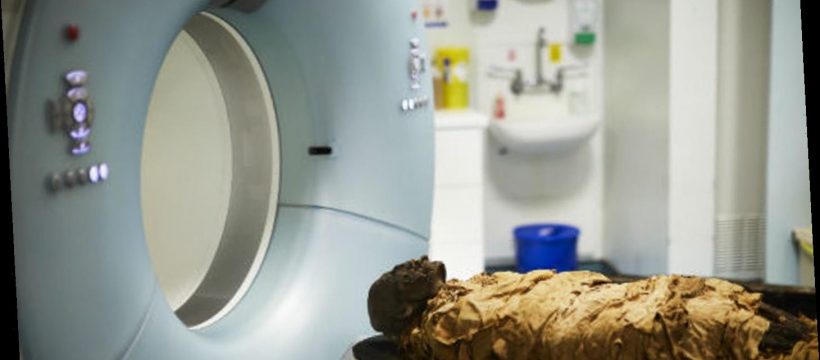Story Highlights
- Scientists were able to reproduce a single vowel sound.
- Nesyamun lived during the politically volatile reign of pharaoh Ramses XI.
- His voice was an essential part of his ritual duties, which involved spoken as well as sung elements.
Scientists have recreated the voice of an ancient, 3,000-year-old Egyptian mummy using 3D printing, medical scanners and an electronic larynx, a new study suggests.
They were able to reproduce a single vowel sound, which sounds like something between the vowels in the words “bed” and “bad.”
The tone is unlikely to be an exact replication of the speech of Egyptian priest Nesyamun, whose mummified body the researchers worked with, because the tongue has lost much of its bulk over 3,000 years.
“We have made a faithful sound for his tract in its current position, but we would not expect an exact speech match given his tongue state,” said co-author David M. Howard of London’s Royal Holloway college.
Nesyamun lived during the politically volatile reign of pharaoh Ramses XI (c.1099–1069 B.C.), working as a scribe and priest at the state temple of Karnak in Thebes, which is modern Luxor.
His voice was an essential part of his ritual duties, which involved spoken as well as sung elements.
The precise dimensions of an individual’s vocal tract makes each of our voices unique, so for the research to work, the soft tissue of Nesyamun’s vocal tract had to be essentially intact, according to a statement from the University of York in the United Kingdom.
Researchers used a non-destructive CT scan to confirm that a significant part of the structure of the larynx and throat of Nesyamun remained intact as a result of the mummification process. This allowed the authors to measure the vocal tract shape from CT images.
Based on these measurements, the authors created a 3D-printed vocal tract for Nesyamun and used it with an artificial larynx commonly used in speech synthesis.
Co-author John Schofield, an archaeologist at the University of York, said the technique could be used to help people interpret historical heritage.
“When visitors encounter the past, it is usually a visual encounter,” Schofield said. “With this voice we can change that and make the encounter more multidimensional.”
According to the study, the research “has produced the unique opportunity to hear the vocal tract output of someone long dead by virtue of their soft tissue preservation and new developments in technology, digital scanning and 3D printing.”
The research was published in the British journal Scientific Reports.
Contributing: The Associated Press
Source: Read Full Article
